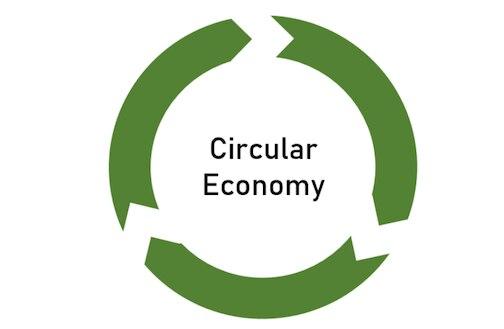The convergence of consumer and industry concerns about sustainability in the manufacturing and re-use of materials is spurring industries such as textiles, jewelry, and automotive to trace every step in the supply chain.
With consumers increasingly asking for products that are produced ethically and sustainably, it’s a unique opportunity for blockchain firms to respond to this market dynamic.
How Blockchain Underpins Transparency and Traceability
There are already many technologies that are well-advanced and available in the market today—and have been available since the mid-90s—that play a role, for example, the ability to put a nano-tracer inside textiles. However, with IoT and AI, blockchain can drive more powerful applications to develop sustainable practices in industry.

algosoft offers to Hire Blockchain Developer to build custom Blockchain applications for mobile and web platform
Blockchain is Powering Battery Industry Sustainability Practices
One example is the battery industry, where Everledger is one of 42 global organizations that have agreed on guiding principles to ensure sustainable practices. These companies make up what is known as the Global Battery Alliance. Ensuring the sustainability of batteries is key since they are used in the transportation and power industries and make up 40% of global carbon emissions annually.
That’s why the Global Battery Alliance has developed 10 guiding principles designed to foster the creation of a sustainable battery value chain by 2030. Key to achieving these goals is the ability to trace materials used in battery manufacturing back to their raw materials and production processes. Blockchain technology, combined with other technologies like IoT and AI, gives businesses and consumers this needed visibility.
This is all part of a transformation to sourcing materials and leaping into the circular economy—an ecosystem that reduces waste and promotes re-use and recycling.
While in the past industries have naturally relied upon natural resources, which are all finite, they now focusing on how to re-use and repurpose parts. Lithium and cobalt in batteries are a prime example.
Ford and Volvo Cars are using blockchain to trace cobalt in its electric vehicle batteries. Data captured on the blockchain will include details like the origin of the cobalt, attributes such as size and weight, the chain of custody and information ensuring that supply chain participant behavior is consistent with globally recognized supply chain guidelines.
This approach is being applied to other sectors as well, like apparel, wine and spirits, finance, and even advanced manufacturing, which can benefit greatly from increasing levels of transparency for their supply chains.
Blockchain for Verifying Diamonds and Precious Gems
Everledger also works in the diamond and colored gemstone space, using captured parts of supply chain data along with Internet of Things technologies to enable it to learn the identity of a diamond. Retailers like Fred Meyer Jewelers and Brilliant Earth are using Everledger’s blockchain solution to allow purchasers on its website to see each diamond’s provenance and characteristics like rough carat weight, rough diamond videos and planning images. This brings transparency to the jewelry industry on a scale never before seen, and supports higher customer engagement at the point of sale.
In much the same way that technology allows facial recognition of a person, it also can be applied to the recognition of an individual diamond or gemstone. Connecting those scanning points along the supply chain allows the ability to record a provenance event—powered by blockchain technology.
The incredible transformation journey that’s currently underway is the realization that enabling ever more transparency in supply chains is where value and the values of its participants can align.


